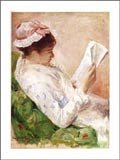 The Summer Before the War by Helen Simonson
The Summer Before the War by Helen SimonsonMy rating: 4 of 5 stars
How controversial is a Latin teacher named Beatrice? In 1914, in the small English town of Rye, a woman teaching Latin is shocking. Shocking! Beatrice Nash, who was her scholarly father's assistant, travel agent, and budget manager until his death, has two choices: remain at her stingy and disapproving aunt's house, or work. She chooses work.
Rye, although its more titled and tony citizens are conservative and easily shocked, has undercurrents of sophistication and modernity that Beatrice taps into immediately. She meets a serious surgical student, Hugh, and his flamboyant, poetic cousin, Daniel, both watched over and protected by their aunt Agatha. Her students include Snout, a Romany boy whose innate talent for Latin is suspect in his own community and the outside. Circumstances also bring her into the circle of notable residents, including a freethinking woman photographer, a novelist whose entry into social circles is blocked because of a divorce in her past, and a portly, portentous novelist who clearly is styled on Henry James.
The peaceful summer is the prequel to England's entry into the War. Many local men are called to fight in the bloody trenches, hospitals, or officer corps. How the townspeople adjust depends not only on their wealth, title, and status, but also the emotional toll of expectations and loss.
What will the dreamy Daniel do when his partner-in-poetry, Craigmore, is forced to enlist when his father hears Daniel's scandalous poem about his son? What of Snout, who realizes that his Romany heritage will mean that he will never have the opportunity to use his scholarship? And how will the haughty townspeople react to the hoardes of Belgian refugees they are forced to take in?
The gentry set up super-patriotic organizations, including a chapter of the St. George Recruitment Brigade, in which fetchingly-dressed young women pressure young men to enlist, handing those who resist a white feather, symbol of cowardice. They also plan a parade and exhibition, including Daniel's model trench, tastefully decorated and supplied with shelves for books of poetry. Marrows are judged, young people pick hops and dance, students translate the Aenid before they march off to war. So it goes.
The texture of life in Rye changes with some room for growth and tolerance, and with tragedies mixed in with the small but vital victories, both personal and political. As in Simonson's first book, Major Pettigrew's Last Stand, the reader gets to know this texture, and comes to care about - and root for - the townspeople and the town.
Highly recommended. One star subtracted because the ending seemed disappointingly hasty.
I received this book as an ARC from NetGalley in exchange for a fair review.
View all my reviews

